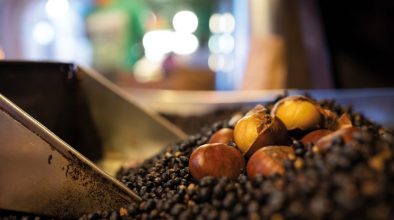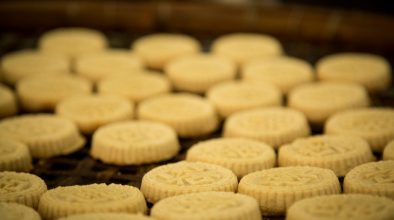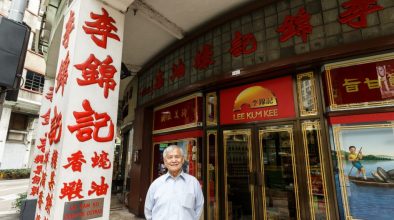The abacus has been a tool of calculation widely used in China for nearly 2,000 years, and it is still alive in Macao.
The abacus has been used in China for millennia, and although its popularity has declined since the invention of hand‐held electronic calculators in the 1970s, it remains in widespread use among traders and clerks in Asia and Africa, in shops, restaurants and street stalls. Family‐owned stores in Hong
Kong and Macao, particularly those selling traditional Chinese medicine, use abacuses, and it is much the same in Chinatowns in North America.
Many factors contribute to the staying power of this ancient device – it’s cheap to produce, easy to use, and requires no electricity—but perhaps the most significant is the same factor that has cemented its place in Chinese culture. While the origin of the abacus itself remains unknown, China can claim the best and most widespread method for using it: zhusuan.
In 2013, the United Nations Educational, Scientific and Cultural Organisation (UNESCO), recognising the broad cultural impact and symbolic resonance of zhusuan—and by extension, the abacus—officially listed Chinese zhusuan as an intangible cultural heritage element.
Rise of mathematics
The abacus is the oldest and most widely used tool for calculation in the world, appearing in Mesopotamia as early as 2700– 2300 BC. Many early civilisations, including the Babylonians and Egyptians, utilised a rudimentary form of the abacus, but it was the Persians who exported the abacus to Europe and Asia.
The earliest record of the Chinese abacus, known as suanpan (counting tray), is an illustration from Supplementary Notes on the Art of Figures by Xu Yue. Published in 190 AD, the book also introduced zhusuan as a method for performing mathematical calculations with an abacus.
Zhusuan likely predates the invention of the decimal system by Indian mathematicians between the first and fourth centuries AD, and builds on a long tradition of mathematical innovation in China.
The earliest surviving evidence of mathematics dates from the Shang Dynasty (1600–1046 BC) in the form of numbers scratched into tortoise shells. It was the most advanced number system in the world at the time, enabling calculations on number rods, and eventually, on suanpan.
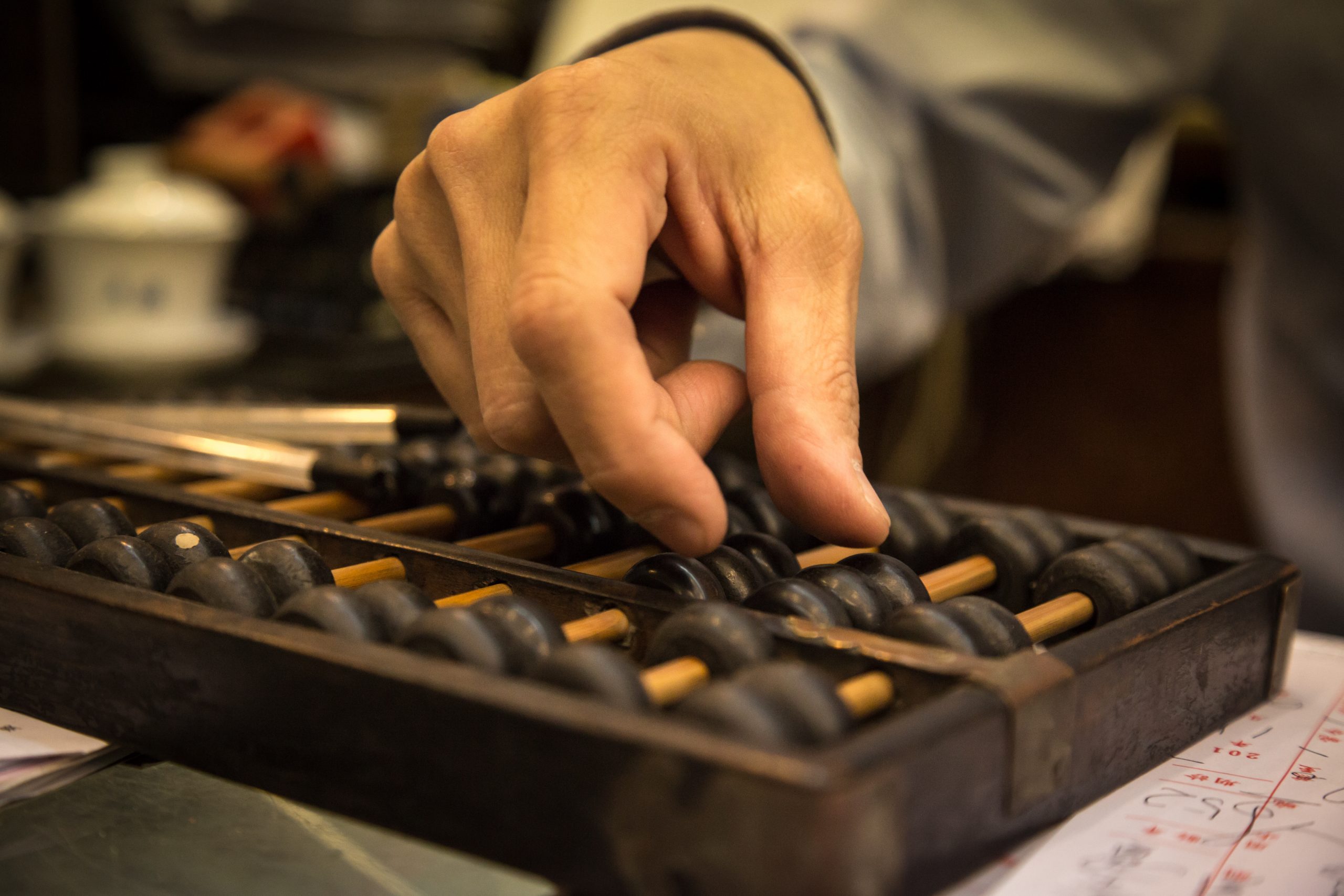
Suanpan were typically constructed of bamboo with seven or more fixed wires or wooden rods affixed to metal reinforcements. Beads were attached to each wire or rod, organized into an upper and lower deck. The upper deck, known as heaven, carried two beads per rod or wire, each with a value of five, The lower deck, known as earth, carried five beads per rod or wire, each with a value of one. This was the 2/5 abacus and remained in common use until the 1850s when a 1/4 abacus went into production.
One of the most famous Chinese scholars of the abacus was Cheng Dawei (1533–1606). He published General Source of Computational Methods, an arithmetic guide for the abacus, in 1592. The book, which analyses 595 problems over 12 chapters, played a pivotal role in systematising and popularising zhusuan.
With more than 100 editions printed around the world, Cheng’s book continued to influence mathematics and promote the spread of zhusuan for centuries. It reached Japan in 1600, pioneering the use of the abacus in that country. Each year a celebration is held there on 8 August to remember him.
The most popular style of Japanese abacus (soropan) is the 1/4, which is still manufactured there.
By the end of the Ming dynasty, the book spread to Southeast Asia, Europe and the Americas, becoming the global foundation for developing the abacus.
Moving into the modern era
For centuries, schoolchildren in the Chinese‐speaking world, South Korea, and Japan learned zhusuan in their mathematics class. Research has shown that this method of instruction greatly improved their mathematical abilities and comprehension, enabling them to outperform their western counterparts.
In the west, children typically learned mathematics through memorization, engaging with figures in the abstract. By using an abacus, children in the east developed a clearer, more concrete grasp of figures. This type of abacus‐based mental arithmetic is also thought to improve attention span, memory, and mental capability.
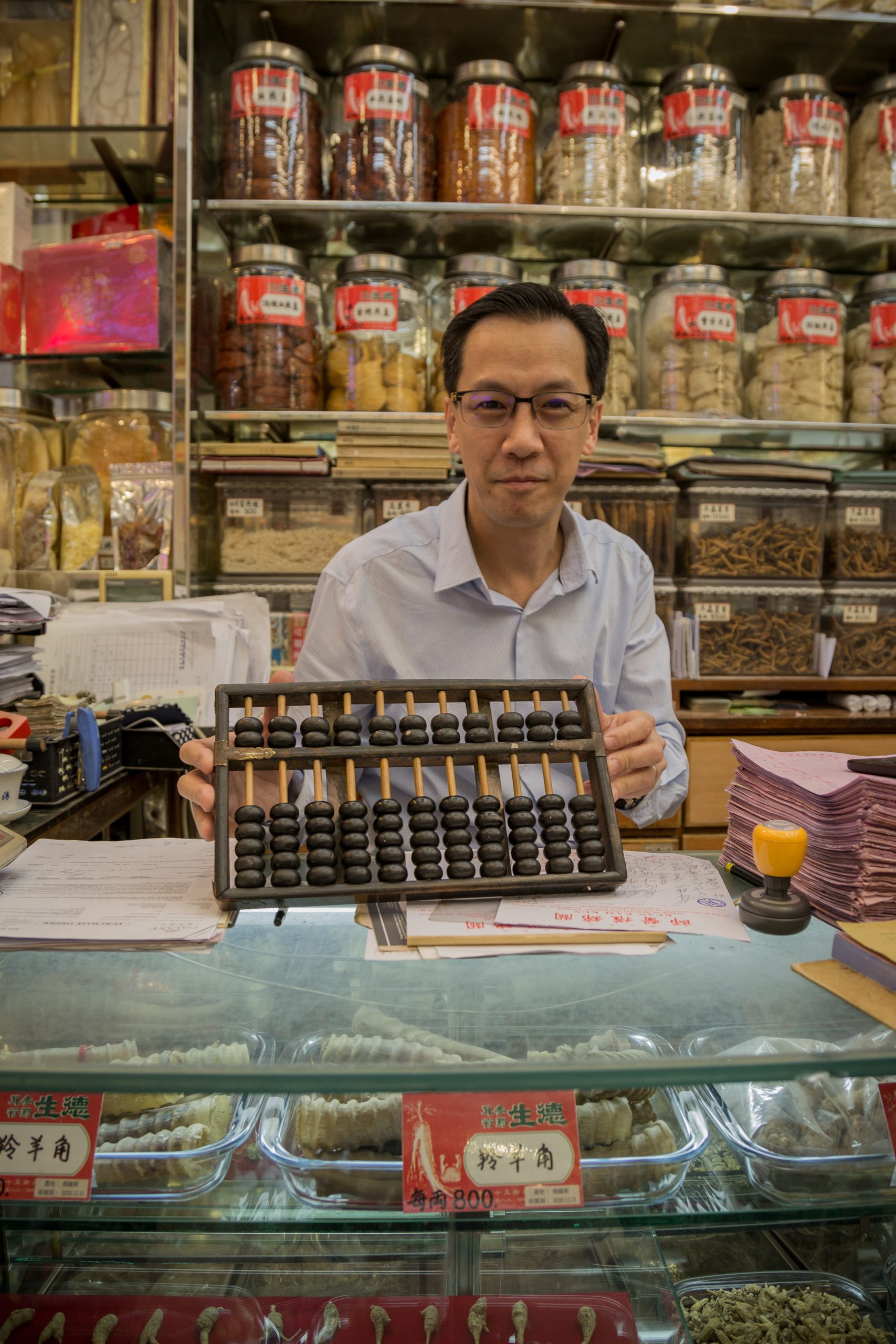
In China, zhusuan competitions between students using the abacus remained popular throughout this time. But the arrival of cheap electronic calculators in the 1970s dealt a heavy blow to this ancient device. Companies in Japan, Europe, and the United States began producing light, portable calculators suitable for individual use, which quickly spread across the developed world.
Most shops and markets switched to the new invention, and schools began to cease abacus‐ ‐based instruction. While still in use in some corners of the world, the abacus largely shifted from a valuable tool to an object used as a symbol, gift, or piece of art.
Preserving heritage
At the 2013 World Heritage Congress, held in Baku, Azerbaijan, UNESCO officially listed China zhusuan—along with Korean kimchi and Japanese traditional cuisine—as an element of intangible cultural heritage.
As of January 2017, China boasted 38 intangible cultural heritage elements inscribed by UNESCO, the most of any country. Other notable elements include calligraphy, paper‐cut art, seal engraving, acupuncture, silk craftsmanship, several types of traditional opera, and the Dragon Boat Festival. It is surprising that zhusuan was not recognised earlier.
Often described as the fifth great invention—a reference to the Four Great Inventions: the compass, gunpowder, papermaking, and printing—zhusuan has permeated Chinese culture over the centuries. Beyond the practical use of zhusuan as a method of performing calculations, UNESCO pointed to its “vital role in giving an impetus to mathematical studies, promoting algorithmic practices, and fostering intelligence.”
Even today it is credited with contributing to the “advancement of calculating techniques, cognitive schemas, educational psychology, and intellectual development. It also has a farreaching influence in various fields of cultural creativity, including folk customs, language, literature, sculpture and architecture.”
Let us leave the final word with scientist Huang Xuhua, broadly considered the “Father of China’s nuclear subs”, to remind us of the important place of zhusuan in the history of China.
In the late 1950s, Huang was working for the China Shipbuilding Industry Corporation when it received the critical, and secret, mission of creating a nuclear submarine.
“Lots of critical data used in the development of the submarine burst out of the abacus,” he recalls. Armed with their abacuses and zhusuan, the team turned out five original designs in a period of just three months. “Scientists attacked the beads until every section reached the same result.”
The first submarine, the Long March‐1, was launched in 1970 and went into service four years later. Decommissioned in 2016, the submarine is now exhibited at the Chinese Naval Museum in Qingdao in east China. Huang still owns one of the abacuses used by his team, a testament to the critical importance of this tool, and the method that carried it – and China – from the second century AD into the nuclear age.
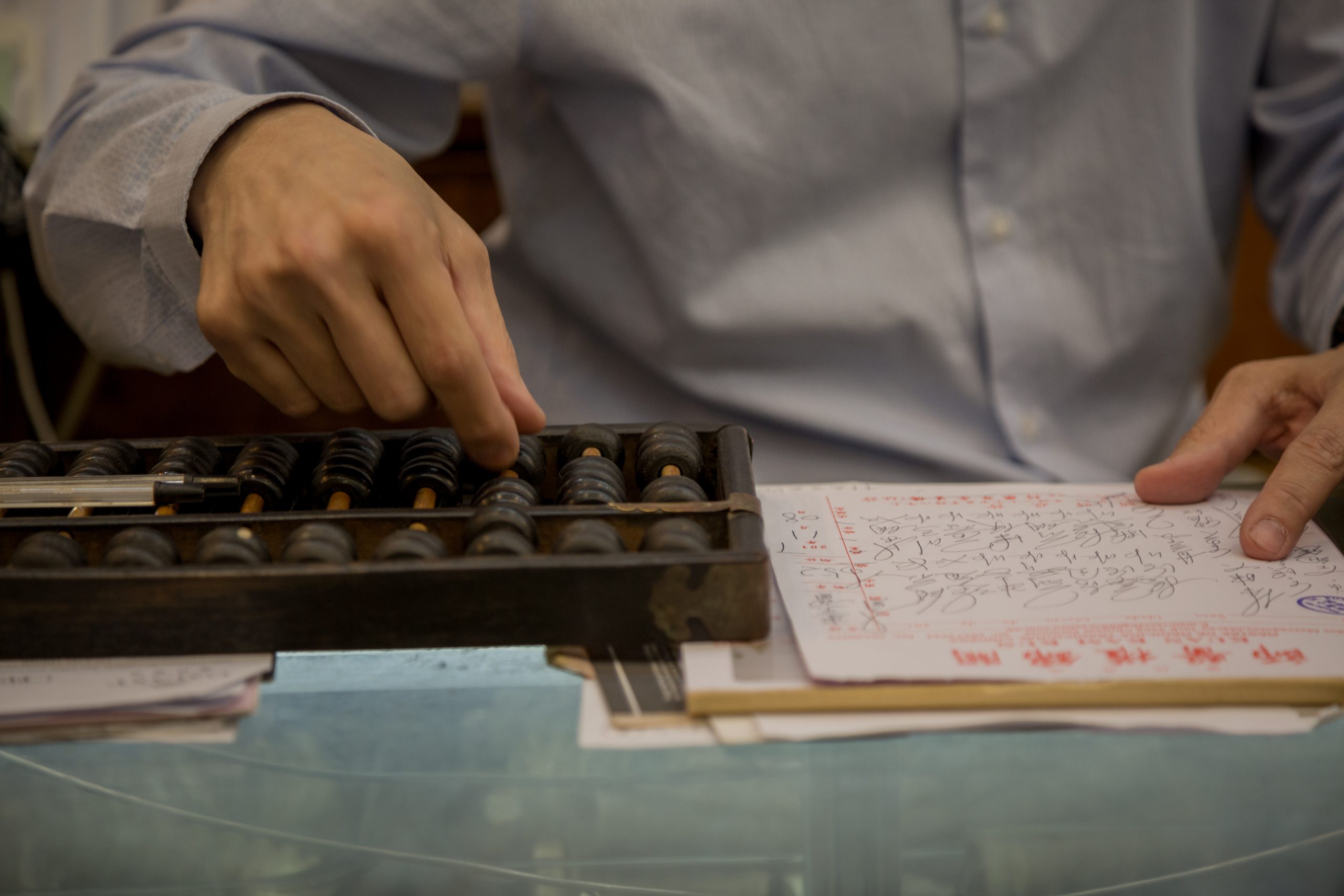
Flicking through time in Macao
TEXT Cathy Lai
The busy street of Rua dos Mercadores near Senado Square is home to some of the oldest traditional Chinese pharmacies in Macao. They are among the few remaining businesses that still use the abacus for calculation today.
Among them is Tack Sang San Yung Medicine Hong – “Hong” is a traditional name for a business – established 63 years ago by the Kwan family. Over the years, the Kwans have become a familiar name among local consumers of Chinese medicine, known for their quality products and medical treatments.
Kwan Kam Kuen, who inherited the business from his father, explained his preference for the abacus, offering insight into its continued popularity among traditional Chinese pharmacies:
“A prescription usually consists of more than ten different kinds of ingredients, such as herbs, minerals and sometimes animal parts, each at a certain price per gram. For me, it is more convenient to use the abacus for calculation, especially when the prices are sometimes going into decimal places.”
Abacuses are often constructed as a bamboo frame with seven or more columns of beads sliding on parallel rods, divided into an upper and lower deck. The pharmacist first calculates the cost of each ingredient with the columns on the right‐hand side, then inserts the result to the columns on the left‐hand side. After inserting the price of every ingredient, the pharmacist counts the beads on the left‐hand side to find out the total cost. Some columns can be assigned to decimal places if necessary.
Kwan was a primary school student when he first came into contact with the abacus some 40 years ago. “I received abacus training when I was studying at Yuet Wah College. It was very common in local schools at that time,” he explained.
Memorising four sets of easy‐to‐learn formulas – namely for addition, subtraction, multiplication and division – allows users to calculate with great efficiency. Liu Wai Ming, an assistant in the pharmacy who also learned to use an abacus at a young age, said: “I do addition and subtraction faster with abacus than a calculator. I am just so used to it.”
Kwan has worked with the same abacus for more than ten years, its beads shiny from the constant rubbing and flicking “We still use the abacus every day,” he said. “It is something that once you have learned, you will never forget.”
